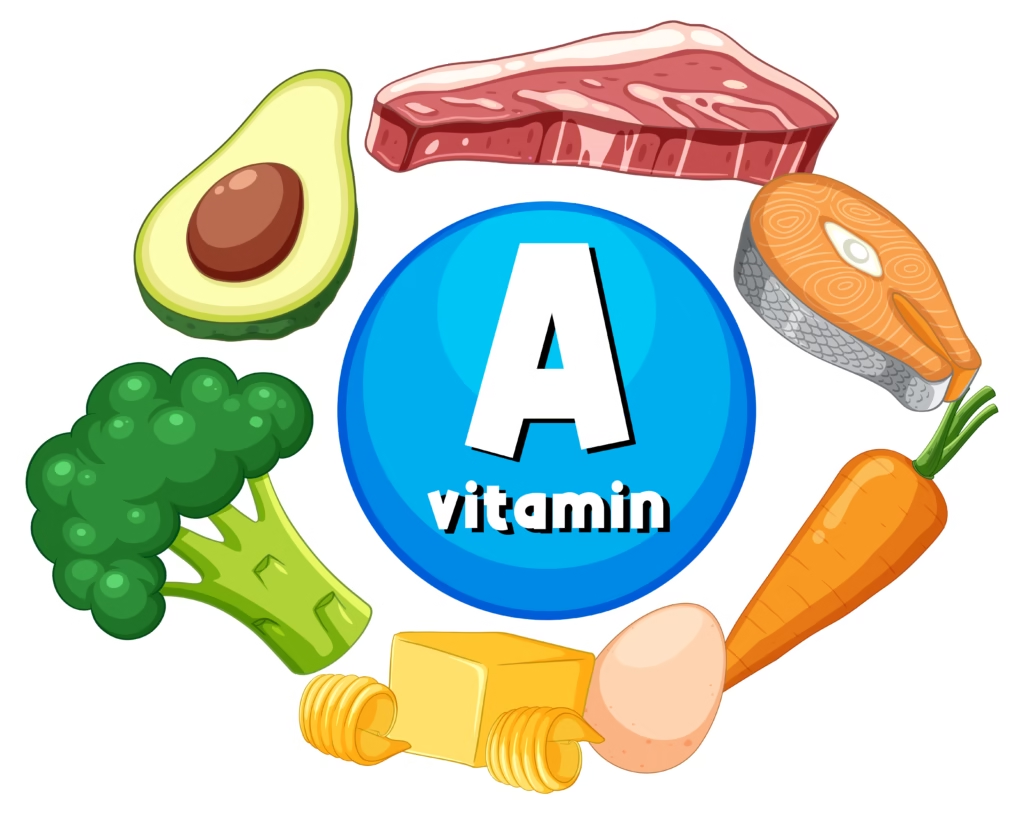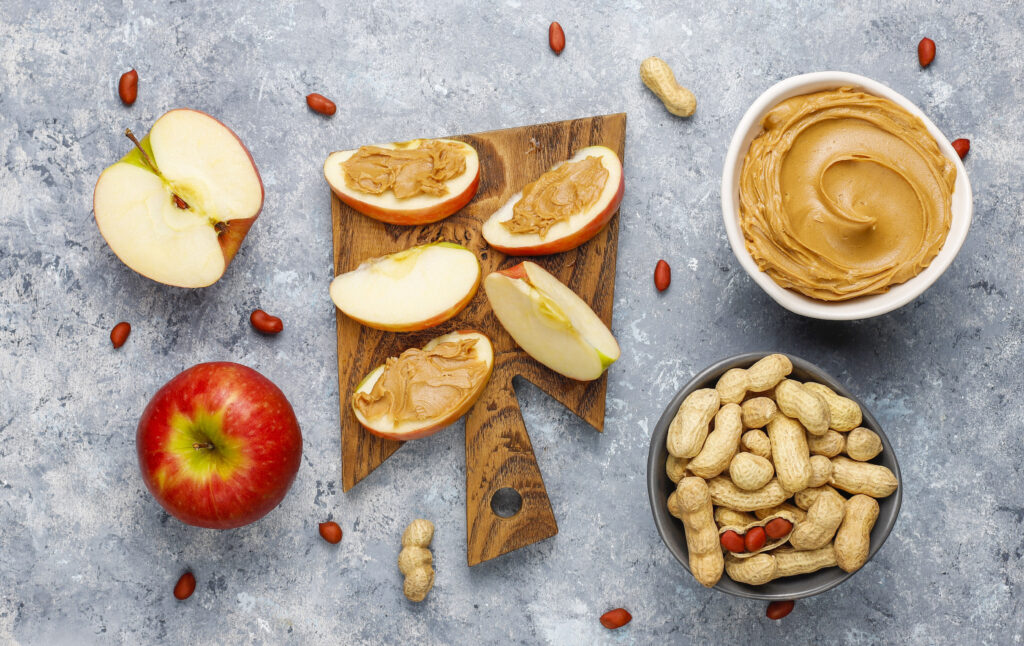Vitamin A Benefits, Food Sources, Deficiency Signs, and Safe Use | Doctor’s Guide
Learn everything about Vitamin A from a doctor—its role in vision, immunity, growth, and skin health, top food sources, deficiency signs, recommended intake, and supplementation safety.
Table of Contents
🩺 Introduction: Why Vitamin A Is More Than Just for Your Eyes
When we think of Vitamin A, most of us picture carrots and good eyesight. But in reality, Vitamin A is a powerful nutrient with wide-ranging benefits for your body—from your eyes and skin to your immune system, reproduction, and cellular health.
As a doctor, I often encounter patients unaware of their Vitamin A deficiency—or, on the other extreme, unknowingly overusing supplements. Both can have significant health consequences.
In this comprehensive article, you’ll learn:
- What Vitamin A actually is (in both forms)
- How it functions in the body
- Symptoms of deficiency and toxicity
- Natural food sources (animal and plant-based)
- When and how to supplement safely
- Special considerations for pregnancy, children, and vegetarians
Let’s begin with the basics.

🔍 What Is Vitamin A?
Vitamin A is a fat-soluble vitamin, meaning it requires dietary fat for absorption and is stored in the liver and fatty tissues for future use. Your body doesn’t excrete it easily like water-soluble vitamins (e.g., B and C), so both deficiency and excess can become problematic.
✅ Two Main Types:
1. Preformed Vitamin A (Retinoids)
- Active form of vitamin A
- Found in animal-based foods
- Readily absorbed and used by the body
- Includes: retinol, retinal, and retinyl esters
2. Provitamin A Carotenoids (Beta-carotene)
- Found in colorful plant-based foods
- Body converts it into retinol as needed
- Less risk of toxicity compared to retinol
- Most common type: beta-carotene

🧠 What Does Vitamin A Do in the Body?
Vitamin A is a multi-functional vitamin, involved in numerous biological processes. Here’s a deeper look:
👁️ 1. Supports Vision
- Essential for forming rhodopsin, a pigment in the retina that enables night vision.
- Prevents night blindness, dry eyes, and helps maintain a moist cornea.
- Deficiency is a leading cause of preventable childhood blindness worldwide.
🛡️ 2. Boosts Immunity
- Strengthens the barrier function of skin and mucous membranes (respiratory, digestive, and urinary tracts).
- Enhances function of white blood cells (WBCs) that fight infection.
- Children deficient in Vitamin A are more vulnerable to infections like measles, pneumonia, and diarrhea.
🧬 3. Cellular Growth and Differentiation
- Plays a vital role in DNA transcription and the growth of cells and tissues.
- Important for fetal development, particularly organ and limb formation during early pregnancy.
🧖 4. Maintains Skin and Epithelial Tissues
- Keeps skin smooth, supple, and less prone to damage.
- Used in dermatology to treat acne, psoriasis, and photoaging (topical retinoids).
👶 5. Supports Reproductive and Bone Health
- Promotes sperm production, ovarian health, and fetal development.
- Essential for bone growth and remodeling, especially in children and teens.
🥗 Natural Food Sources of Vitamin A
Getting Vitamin A from real food is the safest and most effective approach. Here’s a breakdown of the best dietary sources:
🥩 Animal-Based (Preformed Vitamin A – Retinol)
| Food | Approximate Content (per 100g) |
|---|---|
| Beef liver | 9,000 mcg RAE |
| Chicken liver | 3,000 mcg RAE |
| Whole milk | 65 mcg RAE |
| Butter | 684 mcg RAE |
| Cheese (cheddar) | 263 mcg RAE |
| Eggs (1 large) | 75 mcg RAE |

⚠️ Liver is extremely rich in Vitamin A—just a small amount provides far more than your daily requirement.
🥕 Plant-Based (Beta-Carotene – Provitamin A)
| Food | Beta-carotene (mcg) per 100g |
|---|---|
| Carrots (raw) | 8,285 |
| Sweet potatoes (baked) | 11,500 |
| Spinach (cooked) | 6,300 |
| Kale | 9,226 |
| Red bell pepper | 2,130 |
| Mango | 1,080 |
| Apricot (dried) | 2,137 |
Tip: Eat your veggies with a bit of healthy fat (olive oil, nuts, seeds) to boost absorption.
⚠️ Signs and Symptoms of Vitamin A Deficiency
Vitamin A deficiency is still a public health problem in many developing countries, especially affecting:
- Infants and young children
- Pregnant or breastfeeding women
- People with malabsorption (e.g., Crohn’s, liver disease, celiac, bariatric surgery)

👁️ Eye-Related Symptoms:
- Night blindness (early warning sign)
- Dry eyes (xerophthalmia)
- Bitot’s spots (foamy patches on the white of the eye)
- Corneal ulcers or blindness (advanced stage)
🦠 Other Signs:
- Frequent infections (especially respiratory and GI tract)
- Delayed wound healing
- Rough, dry skin or keratinization
- Delayed growth in children
- Fertility issues in men and women
In children, even a mild deficiency increases mortality from infections like measles or diarrhea.
💊 How Much Vitamin A Do You Need?
The RDA (Recommended Dietary Allowance) for Vitamin A is expressed in Retinol Activity Equivalents (RAE).
| Group | RDA (mcg RAE/day) |
|---|---|
| Infants (0–12 months) | 400–500 |
| Children (1–8 years) | 300–400 |
| Males (9–13 years) | 600 |
| Males (14+ years) | 900 |
| Females (14+ years) | 700 |
| Pregnancy | 770 |
| Lactation | 1,300 |
💣 Can You Get Too Much Vitamin A?
Yes—because it’s fat-soluble, Vitamin A can accumulate in your body, especially from:
- High-dose supplements
- Frequent consumption of organ meats (especially liver)
- Long-term use of retinoid medications
🚨 Symptoms of Vitamin A Toxicity:
- Headache, nausea, vomiting
- Blurred vision
- Dizziness, irritability
- Liver damage
- Bone thinning
- Birth defects (if consumed in excess during pregnancy)
🟠 Safe Upper Intake Level:
- Adults: 3,000 mcg RAE/day
- Children: Much lower — avoid giving supplements without medical advice
Important: Beta-carotene from food is safe, but supplemental beta-carotene in high doses has been linked to lung cancer risk in smokers.

👩⚕️ Doctor’s Advice
- Aim for a balanced diet rich in leafy greens, colorful vegetables, dairy, and eggs.
- Avoid megadoses of supplements unless advised by a physician.
- Pregnant women should never take high-dose Vitamin A without medical supervision.
- Consider testing Vitamin A levels if you experience symptoms like poor night vision, frequent colds, or chronic dry skin/eyes.
✅ Summary: Key Takeaways
| Aspect | Key Point |
|---|---|
| Function | Vision, immunity, growth, skin, reproduction |
| Sources | Liver, eggs, milk, carrots, spinach, sweet potatoes |
| RDA | 700–900 mcg RAE/day for adults |
| Deficiency Risk | Night blindness, dry skin, infections |
| Toxicity Risk | Liver damage, birth defects (from excess supplements) |
| Best Practice | Prioritize food, use supplements cautiously |
📘 Coming Up Next: “Vitamin D – The Sunshine Vitamin”
Vitamin D affects more than just your bones—it influences your immunity, mood, and even hormone levels. In the next post, we’ll discuss deficiency symptoms, natural sources beyond sunlight, and how to supplement it safely.



